You are here
Town Kheyvak.
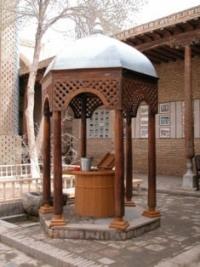
Tour of Khiva.
“Another of the fortresses of this country is Kala-i-Ramal (Sand Fortress). She was built by Sim, the son of Noah. He built it according to the form of the ark of his father, and they call it Heyvak"
The manuscript "Diligaraib" Hudayberdy Koshmuhammed.
Khiva town.
Khiva (Kheyvak) is the former capital of the Khiva Khanate, and now it is the district center of the Khorezm region of the Republic of Uzbekistan. It never changed its location, as it was with some other cities of Khorezm, for example, Urgench, Kyat.
For the first time the name of Khiva is mentioned by the Arab geographers of the 10th century Istahri and Makdisi. According to Istahri, it was located in 8 farces from the mountains. Khazaraspa, on the way to Dzhurdzhdaniya (Gurgandzh), and according to Makdisi - in 8 sections (10 farsahs) on the same way.
In the name of the city they use the modern folk pronunciation "Khiva", in addition to which, apparently, the literary name "Heyvak" entered into use in ancient times. It first appeared in the beginning of the XIII century in the Yakut dictionary and remained in written sources until the beginning XX century.
The meaning of the word Khiva or Hayvak remains unknown. Yakut suggests that it comes from the own name of a certain person. Among the old residents of Khiva there were two legends about the origin of the city.
One legend, known to us from the manuscript of Diligaraib by Hudaiberdy Koshmuhammed, reads as follows: “Another of the fortresses of this country (Khorezm. Ya. G.) is Kala-i-Ramal (Sand Fortress). It was built by Sim, the son of Noah.
He He built it according to the form of the ark of his father, and they call it Heyvak. " (This word is also associated with the date of death of Pahlavan Makhmud. "Sim, coming here, slept on a sandy dune and saw in a dream that 300 torches were burning on it.
When he woke up, he was delighted (to this omen), he grabbed the surrounding land and gave him the outlines of the city. The second time he came, erected walls on it and dug a well in the western side of the fortress.
This well was called "Heyvak", hence the name of the city itself. It is said that the fortress (Heyvak) was destroyed and rebuilt many times - now it is landscaped. " According to the Khivans' oral legend, there was a desert on the site of Khiva, through which the road ran from the city of Mary to the city of Kunya-Urgench (Gurgandzh).
On this road there was one well with good water, which was called Kheyvak. A village gradually began to emerge around him and received its name from it. The true setting of the process of the formation of the city of Khiva is hidden from us for centuries, but it is impossible to ignore the fact that in both legends a special place in explaining its origin is given to the well in the sands.
“Khiva,” writes at the end of the 10th century. AD Makdisi, - on the edge of the desert, it is a vast (city), it is on the canal from the river, it has a well-arranged cathedral mosque. Such are Kardaranhas and Khazarasp with wooden gates and a moat. "In the manuscript, Hudud-al-Alem Khiva is called a small town surrounded by a wall.
Apparently, at that time Khiva was an ordinary, undistinguished Khorezm town; it was supplied with water from a large Khivak aryk The vessels from Jeyhun (Amu-Darya) to Khiva could walk along this Khan. This aryk is known in written sources of a later time (XIV, XVII century), in its position and size it corresponds to the modern channel Palvan-Yap.
The oldest and, it seems, the only architectural monument of the Mongol era in the mountains. Khiva serves as the mausoleum of Seyidg Alavaddin. It is known that Khiva at that time was part of the Khorezm governorship of the Golden Horde, the main city of which was the city of Gurgandzh.
After the fall of the Golden Horde state, life in Khorezm and its capital, Gurgandzha, declines and becomes more and more isolated. A considerable role in the destruction of this country was played by Timur's predatory campaigns.
In the 16th century, Khorezm fell under the power of the Uzbek khans and from that time entered the strip of endless feudal wars. In Khorezm, in addition to Gurganj, several new capital centers soon emerge: Wezir, Yangi-Shahar, Tersek.
In 1556 Dustkhan, the son of Bujgi, made Khiva his capital. Arabmuhammed (1609 - 1621), the father of Abulgazi, stands with one foot in Gurganj, losing its political significance, and the other is already based on Khiva.
His actions show a strong desire to remain on the throne of Khiva, but his hopes did not come true, and he died in an unequal struggle with the opposition group of some part of the Uzbek clan aristocracy and the Yomud sardars headed by his sons Habesh and Ilbars.
It is possible that the construction of the Arab-Mohammed Khan in Khiva in 1616 of a large brick madrasa was caused by an attempt to win the sympathy and authority of the local clergy. Under the historian Abulgazi-Khan and his elder brother Isfen-diar of the mountains, Khiva became the only capital of Khorezm, which since that time (mid-XVII century) has received the name of the Khiva khanate.
By the end of the 17th century, Khiva remained a relatively small city. Kazak Fyodor Skibin in 1697 in “popular speeches" informed about ways to Central Asia that "the city of Khiva is smaller than Bukhara, and the buildings are the same".
The Iranian Nadir-Shah campaigns dealt a heavy blow to the Khanate and the city of Khiva: “After the Nadir-Shah campaign (1740),” writes V.V. Barthold, “unrest increased in Khorezm. Khiva was subjected to destructive raids of the Yomuds; according to Munis and Ohekhi, villages and arable land turned into thickets, lakes into reed swamps, wild animals replaced people.
In the capital, there were no more than 40 families, and according to some news - no more than 15 ". The middle of the XVIII century was for Khorezm a period of fierce civil wars and strife between the Uzbek, Turkmen, Karakalpak and Kazakh tribal and feudal nobility.
Each of the emerging groups sought to seize the khan's power. The Khans were replaced so often that their authority covered by tradition had almost collapsed. The unbridled robbery of the population intensified; unbearable taxes caused discontent and violent uprisings, sometimes ending in victory for the rebels.
For example, Munis in “Fir-Dausil-Ikbal” says: “Gaib Khan was of evil behavior; in 1753 he overlaid the population of five cities (Besh-Ka-la, should be: Khiva, Khazarasp, Khanka, Gurlen and Urgench. I "G.) a fee of 40,000 tills (gold), in connection with this Kipchak-Mitan-Atalyk in Gurlen, Ibrahim-Inak-Naiman, Eshniyaz-Naib-Nikuz rebelled against the khan, and Babacan Khromets helped them in Urgench. Gaib -han scared and, leaving the throne, went to the Kazakhs").
At the end of the 18th century, a new reunification of the khanate began, headed by the inaki, supported by large landowners, merchants and the clergy of the capital. The energetic centralization activity described in the most enthusiastic tones by the Khiva historian Mouin, was shown by the founder of the later Khiva dynasty, Muhammad-Emin-inak (died 1785).
One of his first acts was the restoration of the mountains. Khiva and its dilapidated and dilapidated walls, With the consolidation of the power of the Khans of the Kun-Grad dynasty, the final subjection of the Khorezm Kara-Kalpaks, Aralians, Kazakhs and Turkmen comes to its end, culminating in its kind with the full collection of the Khiva lands.
The Bukhara emirs, concerned about the reunification of Khiva that had begun, sought to sow discord and intensify civil strife among its population. The intrigues of the Bukhara emissaries found a lively response from the local Khorezm nobles, beks and biys, who, as a result of the conquests of Khiva, lost a significant part of their income and independence.
Here is the light of the significance of the newly created Khan's power in Khiva to the historian Muniz: “From the time of Abulgazi-khan and then of Chin-gis-khan in the country of Khorezm, violence and extortion from the population was in progress.
Sultans-villains and emir-tyrants received their livelihood from the wealth of their subjects, self-controllingly disposing of their subjects, taxing them with taxes and labor duties (gogar). Khan (Mohammed Rahim 1, Ya.G.) abolished this oppression and evil custom.
”Of course, this abolition of“ oppression and evil custom ”did not mean the destruction of feudal duties, but only some of their settlement and streamlining through centralization. When Mohammed Rahim Khan expands the field of external military operations of Khiva;
The most important and almost regular source of income for the Khanate was the annual campaigns to punish "some traitors and malefactors" - residents of the lower Amu Darya, southern Turkmen and inhabitants of Northern Iran.
Often, the Khiva armies returned burdened with rich booty of gold, silver, carpets and livestock. slaves. The tribute to the tribute from the population of the Khanate was gathered by officials and the Khan himself during special local hikes and hunts.
Expenditures on generous gifts to the clergy, nobles, and Turkmen sardar and equipment for the troops laid an unreasonable burden on the lean Khiva treasury. This pushed the Khan's power to further increase taxes, strengthen Begar, Hashar and other natural duties.
It is no accident that during the entire first quarter of the XIX century. periphery of Khiva Khanate was covered by a continuous series of large popular uprisings and riots. However, compared with the previous era, the XIX century in the history of Khiva khanate was a time of significant growth of productive forces and the strengthening of economic life.
he strengthening of Khorezm was vividly reflected in the general growth of cities, the development of domestic and foreign trade, and the awakening of crafts. This process was especially strongly affected by the formation of the city of Khiva, which in this case was obliged by its growth and well-known improvement to the stay of the khan rate in it.
The city was almost completely built up with various stone buildings, among which numerous madrassas are striking (before the Great October Revolution in Khiva there were over 60 madrassas). Only descendants and relatives of the khan, court nobles, merchants and clergy remained in the city, and all the other population was ousted in the literal sense of the word by new buildings and new nobility beyond the city limits.
The city, unlike its suburb - Dishan-Kala (external city), receives the name Ichan-Kala (internal city). In the middle of the XIX century, Dishan-Kala was first enclosed by a common defensive wall with 10 gates. Since then, the general, irregular, stretched from east to west configuration of the city has not changed almost until the end of the XIX century.
The most significant buildings of the XIX century in the city of Khiva are the following: Kurnish Khan (Khan's reception) in Kunya Ark, Kutlu-Murad-Inak madrasah, Pahlavan-Mahmud gumbez, Palvan-Darvaz gate, Alla-Kuli-Khan madrasah, Tash palace Howli, covered bazaar (tim) of Alla Kuli-Khan, Muhammad-Amin-Khan madrasah, Kalta Minar minaret, Rafinek Khan's country garden and a number of others.
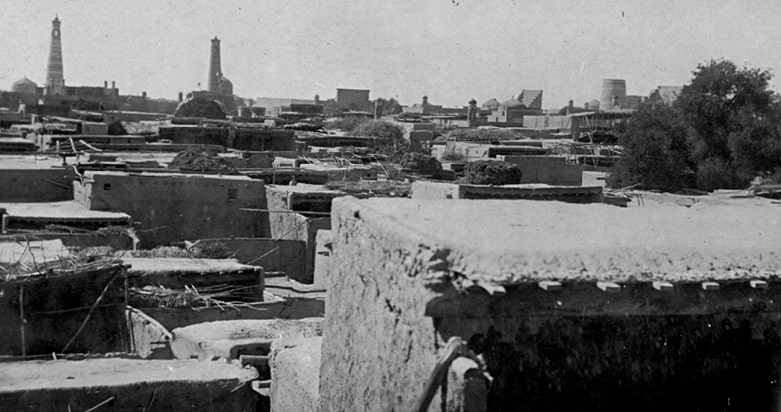
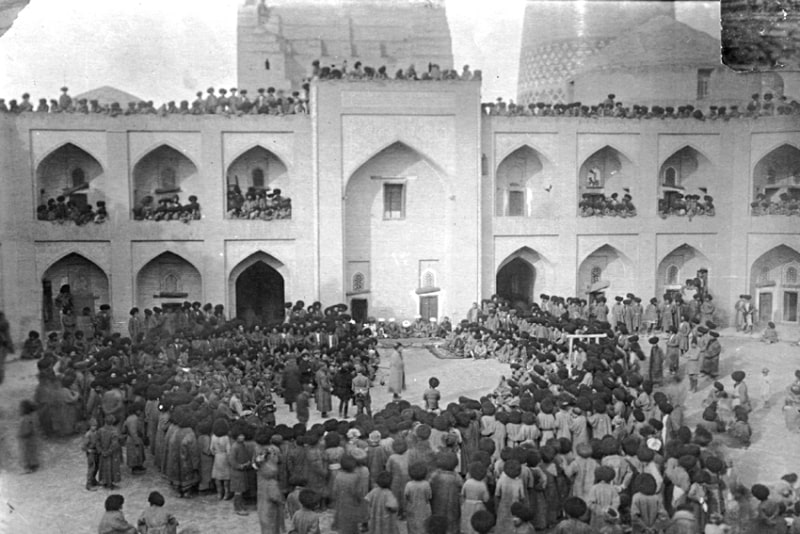
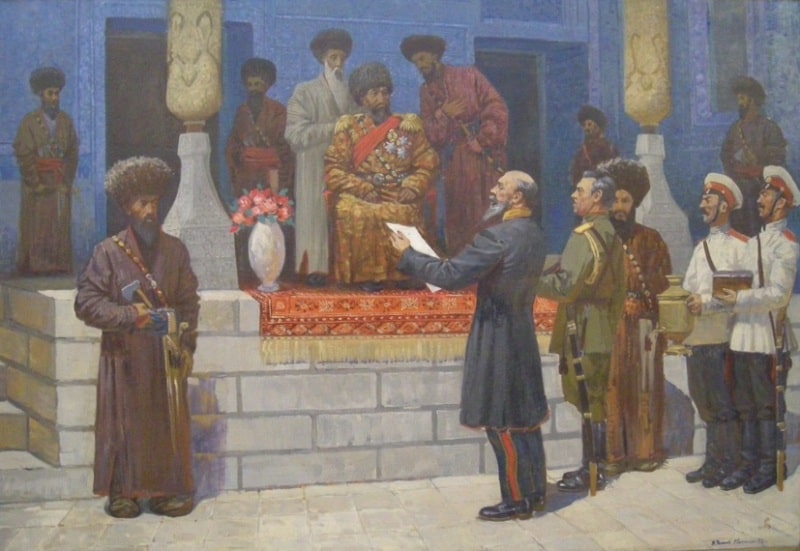
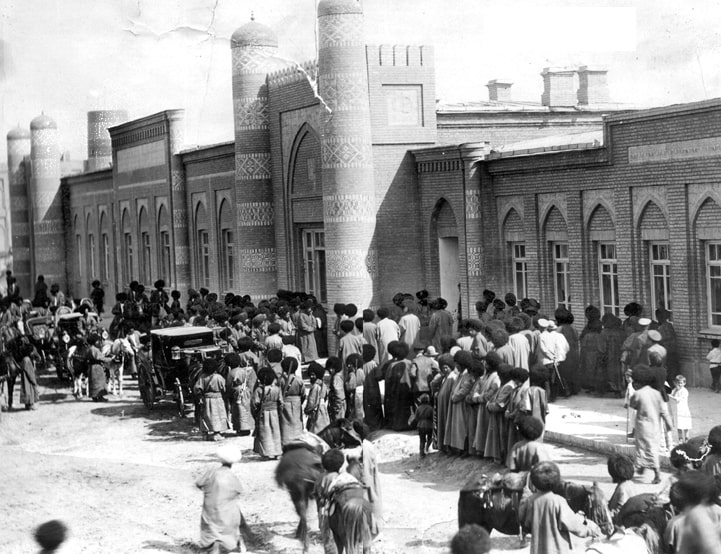
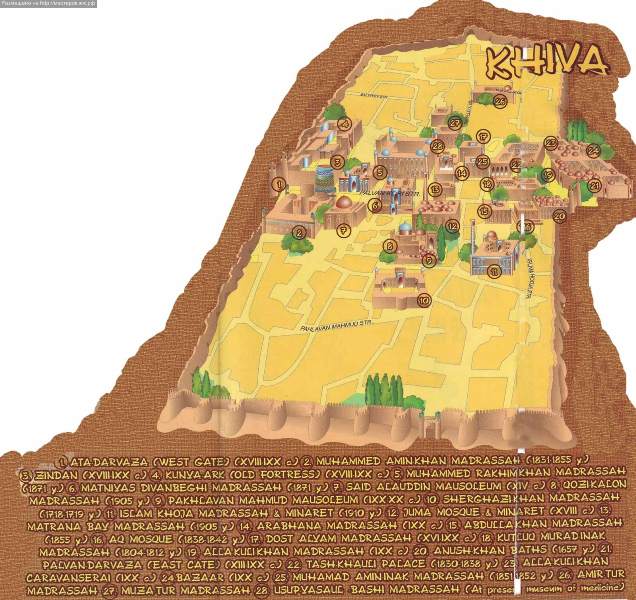
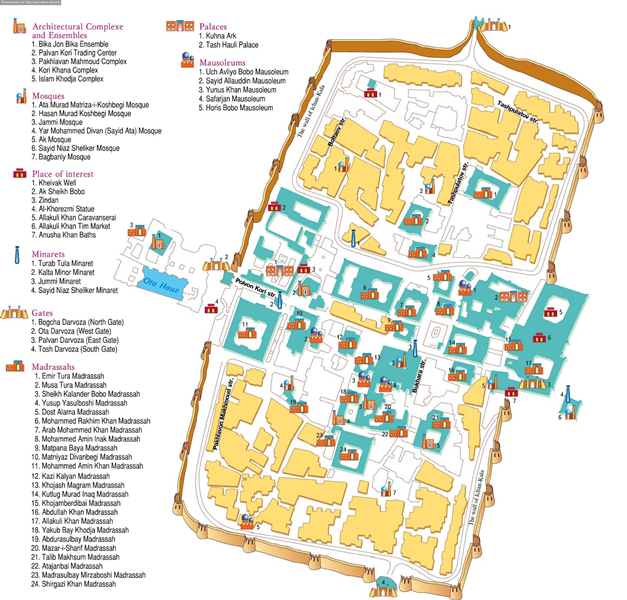
Enlightener:
Ya. G. Gulyamov. "Monuments of the city of Khiva". Publishing house UzFAN. Tashkent. 1941







